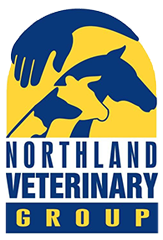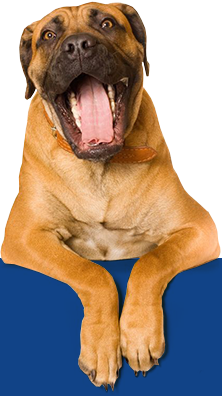Keep An Eye Out For Eye Cancer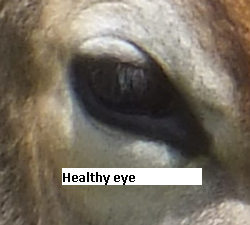
Why do cows get eye cancers?
As in humans UV rays can cause cell damage and cancer formation. It is also thought that viruses like the papilloma virus that causes warts may have a role in eye cancer formation, and genetics play a role as well. Cows with non-pigmented regions around the eye or white third eyelids are much more susceptible to eye cancers, for example Hereford or white Friesian cattle.
Where do eye cancers occur and what do they look like?
Third eyelid: The third eyelid is the additional eyelid in grazing animals that is present at the corner of the eye. It can be pigmented (black) or non-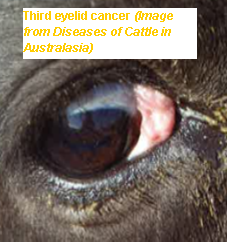 pigmented (white/pink) or a mixture of the two. Third eyelid cancers start off as small protruding lumps on the margin of the third eyelid. They can also be erosive and so the only sign will be a third eyelid that looks “eaten away” and these are harder to spot early. If third eyelid cancers are not detected and treated early then they will become very large and often spread around the back of the eyeball and can even start invading the bony socket that the eye sits in.
pigmented (white/pink) or a mixture of the two. Third eyelid cancers start off as small protruding lumps on the margin of the third eyelid. They can also be erosive and so the only sign will be a third eyelid that looks “eaten away” and these are harder to spot early. If third eyelid cancers are not detected and treated early then they will become very large and often spread around the back of the eyeball and can even start invading the bony socket that the eye sits in.
Eyeball: These are most common in animals with bulbous eyes like Hereford cattle. They initially present as white or pink growths often with a frond like appearance, on the junction between the whites of the eye and the iris (the pigmented section). If allowed to progress they will become large, often bleed or become infected. When very advanced will spread to the local lymph nodes and can result in complete eyeball destruction.
Main eyelids: Cancers can form on the main eyelids of the eye, mostly in animals with white around the eye. Initially these will present as small lumps like the other types of eye cancer but if left will also spread. Pre-cancerous stages can resemble horny growths, these may resolve spontaneously or progress to form cancer.
If my cow has an eye cancer what can I do about it?
A works certificate can be written for a cow with an eye cancer only if: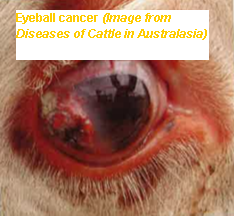
- The cancer has not spread from the eye or eyelid
- The cancer is smaller than a $1 coin
- The cancer is not bleeding or likely to bleed
- There is no other discharge
- It is not fly blown
The cancer can be surgically removed:
- From the third eyelid – if it is small enough to enable us to get a margin of 1cm of normal healthy eyelid between the cancer and corner of the eye. This is a quick, simple and cheap procedure if performed early enough. It can be completely curative or the eye cancer can occur in the future but it should enable the cow to calve or see out her lactation. Removal of the cancerous third eyelid will usually enable the cow to be culled if long term cure is not possible.
- From the eyeball – if it has not spread into the lymph node or surrounding bony socket. This often requires a complete eye removal. This surgery is more expensive, lengthy and has a greater impact on the cow. However, if performed early enough in the disease course it can result in extending the cow’s useful productivity and life.
- From the main eyelid – if only a small area is affected then the cancer can be burned with liquid nitrogen or cut out to try and prevent its recurrence, but these cancers are harder to deal with.
- If the cancer is too big to be removed or has spread to other areas then the only humane thing to do is to shoot the cow immediately.
Early Detection Is Key!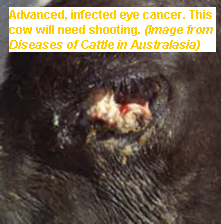
The sooner a cow with eye cancer is identified the better the prognosis. Early detection enables the cow to either be successfully sent to the works or have surgery to remove the cancer and prevent it from recurring. Leaving eye cancers untreated is a serious welfare concern! If you aren’t convinced then think of how painful it is when you get the smallest speck of dirt in your eye and then multiple that by 50!
Eye cancers can remain small for a long time, very occasionally spontaneously disappear or suddenly double in size in a week. We cannot predict how they will react and thus dealing with them as soon as you see them is very important.
It can be difficult to examine both eyes of a cow regularly, for example in a rotary shed you rarely see a cow’s head, and in a herringbone, often only one side. Thus appointing a member of staff to watch cows as they walk into or out of the shed to detect eye cancers early is key. It is especially important to check all cows in the lead up to dry off as they will have a couple of months or more ahead of them where they won’t be examined as regularly and any small eye cancers will have the opportunity to get out of control.
In summary
To reduce the impact of eye cancers on the welfare and productivity of your cows you need to ensure:
- Early and regular detection of eye cancers
- Early treatment (don’t wait until you have a list of things for the vet to do)
- Selectively breeding cows with pigment around their eyes and pigmented third eyelids
